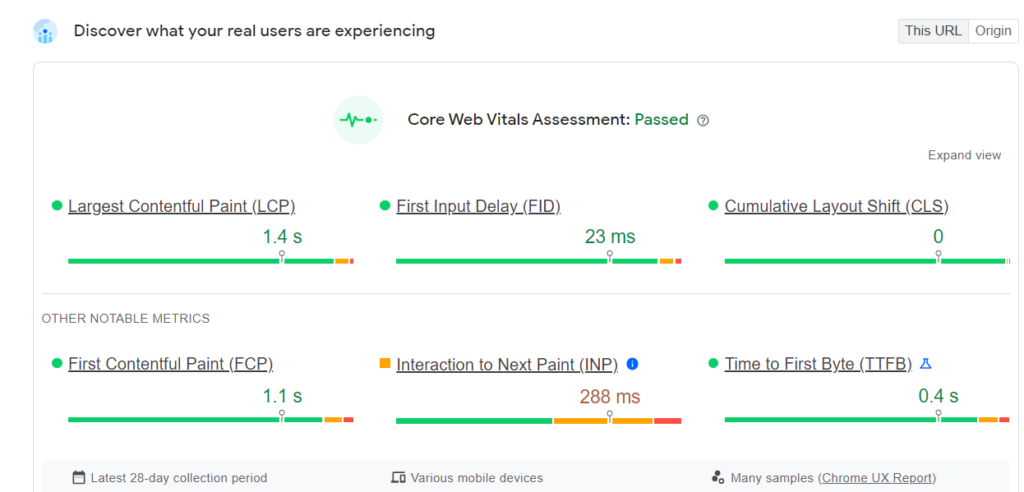SEO is dead. For the twentieth time in a long running series “we need an outrageous headline to get clicks”. That is one of the myths that you can see online but definitely not the only one.
As SEO determines the visibility, reach and success of online businesses it is unavoidable to have a lot of misconceptions and downright misinformation regarding how it works and what can help to strengthen your SEO game. This article seeks to dispel ten of the most pervasive myths about SEO and offer clarity to those navigating this critical domain.
Myth 1: SEO is a One-Time task
Many mistakenly believe that SEO is a set-it-and-forget-it task. This belief is in the opposite spectrum of the truth. SEO requires continuous monitoring, updating, and evolution, especially in light of frequent search engine algorithm changes.
In 2022 alone there were 10 major Google algorithm updates. Factors like competition, changing user behavior, and technological advancements necessitate ongoing adjustments. So no, you can’t just do a one time internal optimization for search engines and expect lasting rankings.
Myth 2: Keyword rich domain influences keyword ranking
I still find businesses that thinks it is a amazing way to boost rankings if they have keyword rich domain to their targeted keywords. If you own a shoe store you might think shoestore.com is a great investment in your online visibility. But it actually isn’t.
As Google Search Advocate John Muller have addressed– keyword rich domains can be associated with spam, make it harder to change business focus or expand offerings, and lack a brand name. Not to mention that such domains don’t have any relation to better rankings for keywords in the domain. So is it worth to pay tens of thousands for such domains? Short answer- no.
Myth 3: More keywords = Better rankings
There’s a misconception that stuffing a webpage with numerous keywords boosts its visibility. However, search engines have become sophisticated enough to penalize such spammy tactics. Keyword stuffing is a real issue and many great SEO audit tools try to pinpoint whenever you keywords repeat more than 3% per webpage.
Instead of keyword quantity, focus on keyword relevance and making the best content for your target audience. When you have a great content- sprinkle some cinnamon here ant there. Just don’t overdo it.
Myth 4: Link building is Dead
Contrary to some naysayers, quality backlinks remain a key ranking factor. While it’s true that the methods and strategies for link building have evolved, Google still places considerable emphasis on the quality and relevance of the sites linking to you.
Mere quantity isn’t going to help you though. Just last year Google announced their Link Spam Update, which further crackdown on unnatural links. The changes are going to prefer quality. So make them links genuine and authoritative.
Myth 5: Social Media doesn’t impact SEO
Never underestimate how other online channels can have help you with your SEO efforts. While it’s accurate that social signals (like likes and shares) aren’t direct ranking factors, they do have an indirect impact. High social engagement can boost a site’s visibility, drive traffic, and enhance domain authority—all of which play a role in SEO.
Myth 6: All pop-ups are bad
Pop-ups, especially those that obstruct content, have gained a bad reputation due to Google’s measures against intrusive interstitials. As mobile search is the new normal, it is really easy to have intrusive pop-ups.
However, not all pop-ups hurt SEO. If implemented thoughtfully, such as exit-intent pop-ups, covering about 30% of the screen (one mobile) or those that offer genuine value, they can be effective without damaging rankings.

Myth 7: More pages guarantees better SEO
A site’s size doesn’t automatically make it more visible to search engines. Creating numerous pages with the same, or similar content responding to the same intent can actually create keyword cannibalization problem, which can lead to lower rankings.
As mentioned before with keyword density- you shouldn’t just focus on quantity. Quality always trumps quantity. Instead of creating numerous low-value pages, focus on crafting rich, in-depth content and update your old posts to keep them fresh.
Myth 8: Schema Markup Guarantees Rich Snippets
Implementing schema markup is a powerful way to provide search engines with detailed page information. However, it’s not a guarantee for earning rich snippets in search results. It merely provides the necessary data, with search engines deciding on its display.
A great example of it is 2023 August changes to HowTo and FAQ rich snippets. These changes drastically reduced the visibility of popular FAQ schema markup, which many SEO experts used for quite a while.
Myth 9: User experience (UX) and SEO are separate fields
While historically viewed as distinct disciplines, the lines between UX and SEO have blurred. Search engines prioritize the user experience, factoring in elements like site speed, mobile-friendliness, and intuitive navigation.
Core Web Vital have become a ranking factor in 2020 and showed Google’s own view on UX and SEO relation.

Myth 10: It’s all about tricks and shortcuts
Final myth is regarding belief that SEO is merely a series of hacks or tricks to fool search engines. However, with ever-evolving algorithms designed to detect and penalize manipulation, this approach is not only ineffective but also detrimental in the long run. Genuine SEO success comes from providing real value, improving user experience, and building credibility.
There are more myths beyond this list
In the vast ocean of SEO, it’s easy to be swept away by myths and hearsay. As we’ve seen, many common beliefs about SEO don’t hold water in the light of day. As the digital world continues to morph and change, it’s more vital than ever for professionals and businesses to stay informed, continually learn, and most importantly, test and adapt their strategies based on real-world results.
